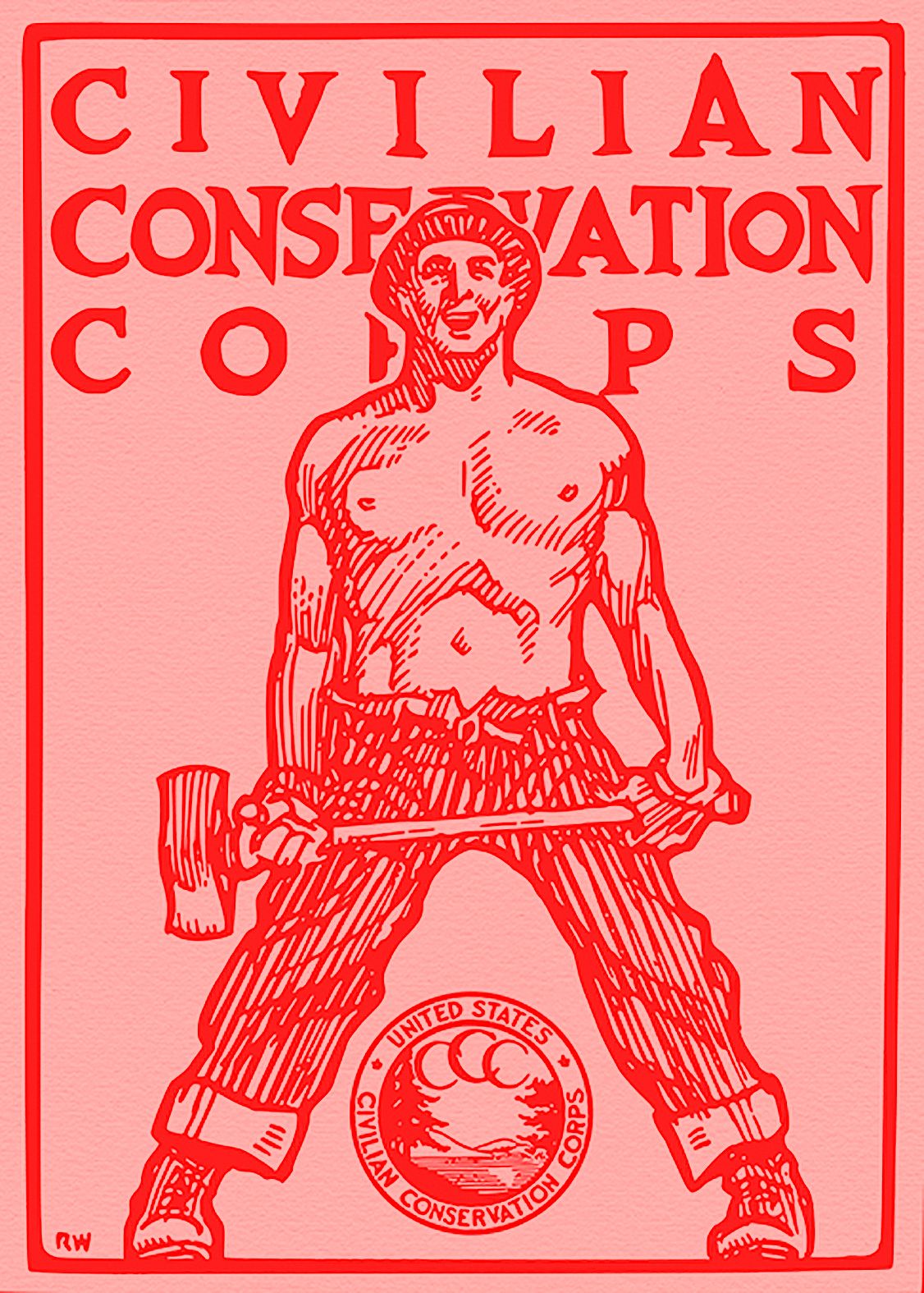Being a Soil Soldier
The Civilian Conservation Corps did more than prime the economy from the bottom up and restore the land. It also gave many young men meaningful work for the first time in their lives.

The Great Depression hit southernmost Illinois harder and earlier than the 1929 bank crash. All three of the region’s economic industries—agriculture, timber, and mining—were no longer sustainable by 1929. Some mining counties in the region suffered the country’s highest unemployment rates. Families were without food. The once lush million-acre hardwood forest between the Ohio and Mississippi Rivers had been cut over completely, the land now eroding away into sixty-foot gullies. The economic and ecological disasters seemed insurmountable.
FDR’s Civilian Conservation Corps was a remarkable solution to these overlapping crises. The basic idea was to put men to work on land conservation projects. The camps sprung up quickly—many were established within three months of Roosevelt taking office—and each housed between 170-200 workers. The men received three meals a day, a need that for some had not been fulfilled for years, and $25/month (all but five of which was sent home to the boy’s family).
In my interviews with past CCC enrollees, I found that the great success of the CCC, beyond priming the economy from the bottom up, was to have given young men jobs with meaning for the first time in their lives.
Kenneth Hawk said that if the CCC hadn’t come along, he “probably would have starved to death…. I don’t know what would have happened to me, probably would have been in jail with the rest of them.” Hawk learned masonry skills in the CCC.
Matthew Skertich was one of ten siblings whose father had lost his job. He became a truck driver in the C’s. His brother also joined a camp. Between them they could send their mother $50 a month, “which at the time was like a million dollars.”
Many families lost everything when the banks failed. Floyd Finley said his father just wasn’t able to deal with it. Some fathers left their families, to ride the rails, looking for work. Vince Matthews’s father was one of them. The money Vince made in the C’s helped his mother as she was supporting nine other children. He worked in the kitchen at the CCC camp. When he quit the C’s he got a job in a Decatur bakery, eventually becoming president of the local baker’s union.
Some men reported learning skills that set them on career paths. Ed Sincic had grown up in a “horrible section” of Detroit. He credited the CCC as the “life-saver’ that moved him toward his goal of being a forester and “the greatest thing that was done by Roosevelt to help the unemployed and youth at that particular time.” Scott Vancil said he valued his CCC years for teaching him to work and live with all kinds of men. He used his experience to work construction all over the country.
The government’s CCC handbook pictured a bare-chested muscled young man felling a tree with an ax. They were selling healthy manhood through a life outdoors, and it succeeded. I was told story after story about it. From an ex-con who felt useful and accepted again to men who learned to drive heavy equipment, to type, do office work, or cook. I am certain working outdoors would have been just as beneficial to women, as it would be today.
Earl Dickey summed up the general experience well when he said that the CCC “gave men a chance that weren’t having a chance.” It taught them skills. It gave them hope. And to the future generations in southern Illinois, it bequeathed a fortune—farmland healed of its worst wounds, a National Forest, a State Park with a stone lodge, and a popularized land ethic that would begin to ensure stewardship for both.
■
Kay Rippelmeyer-Tippy is the author of The Civilian Conservation Corps in Southern Illinois: 1933-1942 (Southern Illinois University Press, 2015) and Giant City State Park and the Civilian Conservation Corps: A History in Words and Pictures (Southern Illinois University Press, 2010).



